In Focus: The painting by Churchill's nephew that gives a unique view of the evacuation of Dunkirk
A unique painting of the evacuation of Dunkirk by Winston Churchill's nephew was recently unearthed. Huon Mallalieu takes a look at John Spencer-Churchill's extraordinary picture.

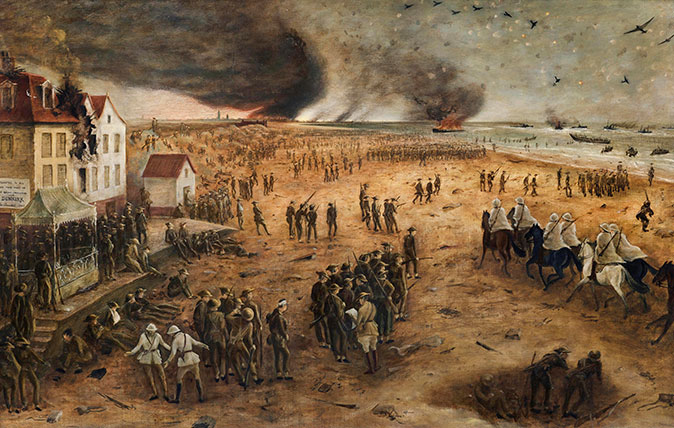
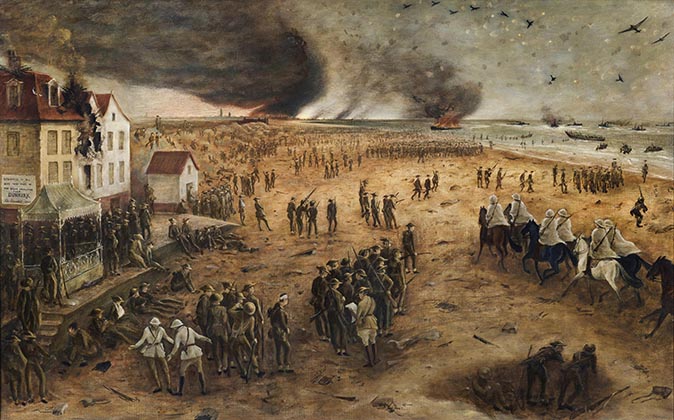
Since David and Judith Cohen retired in 2016 after more than three decades as the specialist dealers in the art of the World Wars, their place has been taken by Andrew Sim, a comparatively young art dealer with a nose for discoveries. In this, he is like his father, Michael Sim of Chislehurst, and finds by both have been featured by Country Life in the past. Andrew puts on occasional exhibitions or special displays at fairs, and one such show took place earlier this month at the revamped British Art Fair at the Saatchi Gallery on the King’s Road in Chelsea.
For his exhibition, under the banner ‘Holding the Line’, Mr Sim found works by 23 artists, the majority of whom range from little known to very obscure – and all of whom are well worth discovering.
One of those names, however, was rather more familiar: John Spencer-Churchill. The artist (1909–92) is known because he was Sir Winston’s nephew, but as a painter, he is remembered, if at all, principally as a muralist.
His most important painting has been in a private collection since 1970, latterly at least in Scotland, where Mr Sim acquired it last year. It’s a unique image of an event in British history that helped define the wartime image of the artist’s famous relative: the evacuation of Dunkirk during the Second World War. Churchill’s 40in by 64in Dunkirk from the Bray Dunes, May 29, 1940 is the only full painting of the ‘Lifting of the Armies’ by an artist who was there.
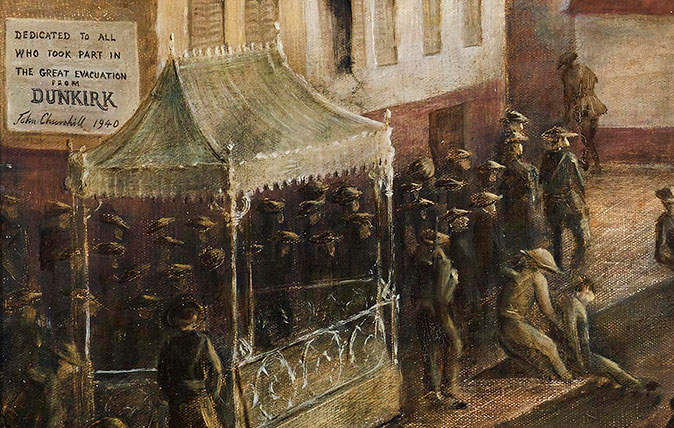
Other artists have depicted the scene too, but none in quite the same way. Official wartime artists Edward Bawden and Barnett Freedman made on-the-spot drawings, and Richard Eurich and Charles Cundall’s officially-commissioned paintings were built from eye-witness accounts. The latter are powerful and moving but give us, in effect, a Messerschmitt pilot’s-eye view of the beach. They lack Churchill’s immediacy and detail.
Churchill, as he noted, was sketching in the dunes, only slightly elevated above his fellows. To the left is the bandstand from which, that morning, General Alexander had tried to address the troops.
In the middle distance, the paddleship-turned-minesweeper Crested Eagle burns. Her bones still show today at low tide. French North African spahi cavalry trot along the shore — who else recorded them?
Exquisite houses, the beauty of Nature, and how to get the most from your life, straight to your inbox.
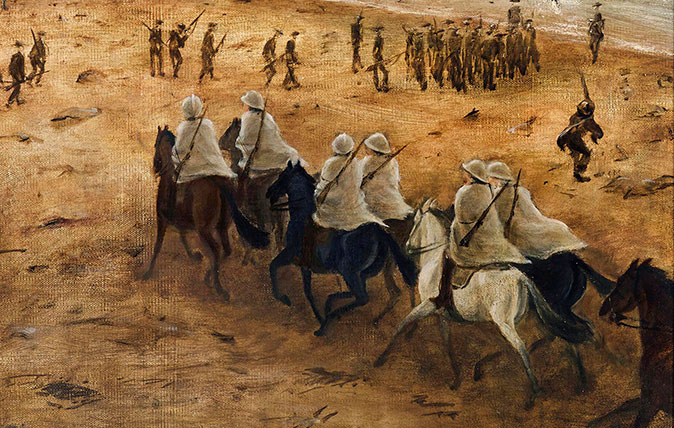
The calm, indeed relaxed, stance of the waiting soldiery accords with verbal accounts of their behaviour after the first days: ‘If ever I have to be bombed again, give me a sandy beach, for the bomb sinks in and it hurts very few when it bursts.’
Only the half-crouched soldier firing vainly at Stukas doesn’t quite convince; he was lifted from a famous photograph – a forgivable later borrowing, as Churchill took 10 years to complete the painting.
He returned to England that evening, ordered by General Alexander to ask his uncle for more little ships. He did so and much later gave Winston the painting.
John Spencer-Churchill's 'Dunkirk from the Bray Dunes, May 29, 1940' is part of Andrew Sim's annual war art show, Holding the Line – www.simfineart.com.
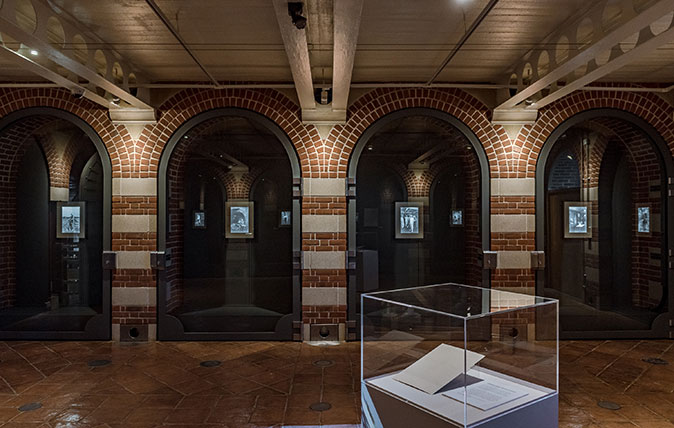
Credit: The Harley Gallery – Clare Twomey's lithophanes, part of The Grand Tour
In Focus: An ethereal exhibition pushing the boundaries of photography, porcelain and the display space itself
Clare Twomey's new exhibition at the Harley Gallery in Nottinghamshire blurs the lines in a fascinating manner: where do the
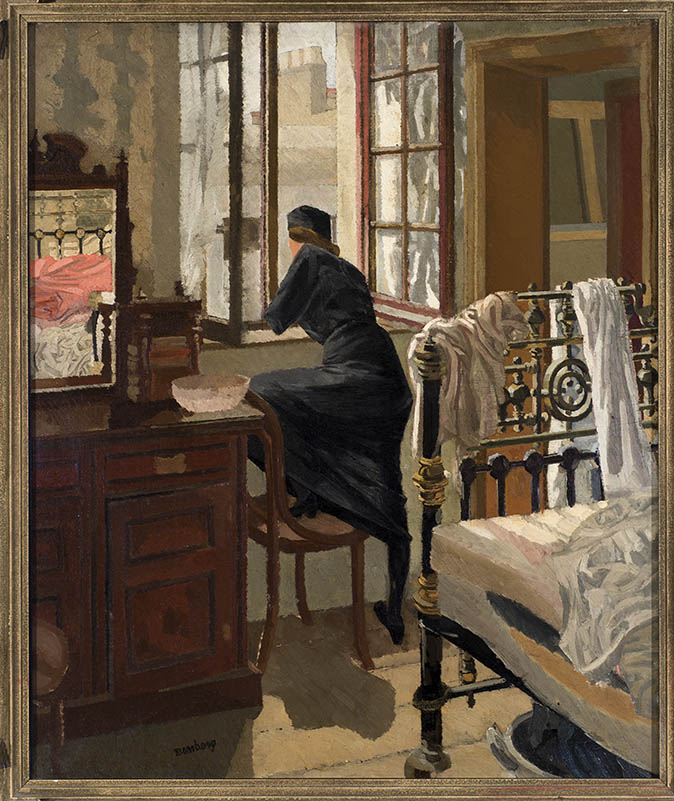
In Focus: Bomberg, the trailblazer who led the way for modern British art but died an impoverished war veteran
Coinciding with the sixtieth anniversary of the artist’s death, the touring exhibition of David Bomberg’s work is entering its final
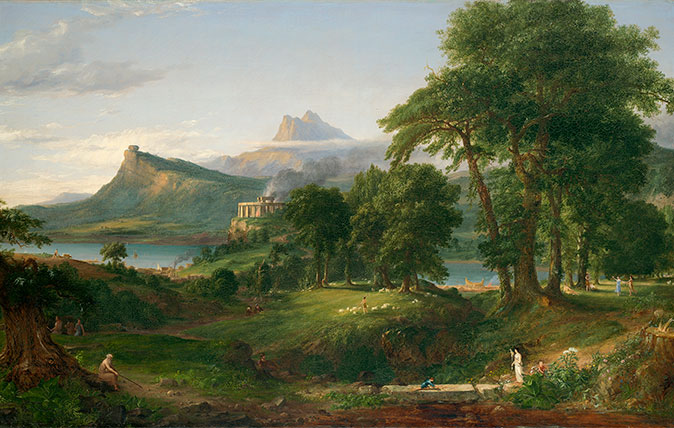
In Focus: Thomas Cole’s work on the days before man’s self-destruction, as relevant today as it was 180 years ago
Thomas Cole left Britain behind as a teenager and became one of America's great painters. Lilias Wigan takes a look

In Focus: The story behind the London Mastaba, the 7,506 barrels currently floating on The Serpentine in central London
The artistic husband-and-wife team of Christo and Jeanne-Claude have been making headlines across the world for decades. Since Jeanne-Claude's death

In Focus: The charmed life of Paddy Leigh Fermor and friends in Greece
The iconic writer Paddy Leigh Fermor and two of his friends in Greece – both artists, one a local man and
Country Life is unlike any other magazine: the only glossy weekly on the newsstand and the only magazine that has been guest-edited by His Majesty The King not once, but twice. It is a celebration of modern rural life and all its diverse joys and pleasures — that was first published in Queen Victoria's Diamond Jubilee year. Our eclectic mixture of witty and informative content — from the most up-to-date property news and commentary and a coveted glimpse inside some of the UK's best houses and gardens, to gardening, the arts and interior design, written by experts in their field — still cannot be found in print or online, anywhere else.
